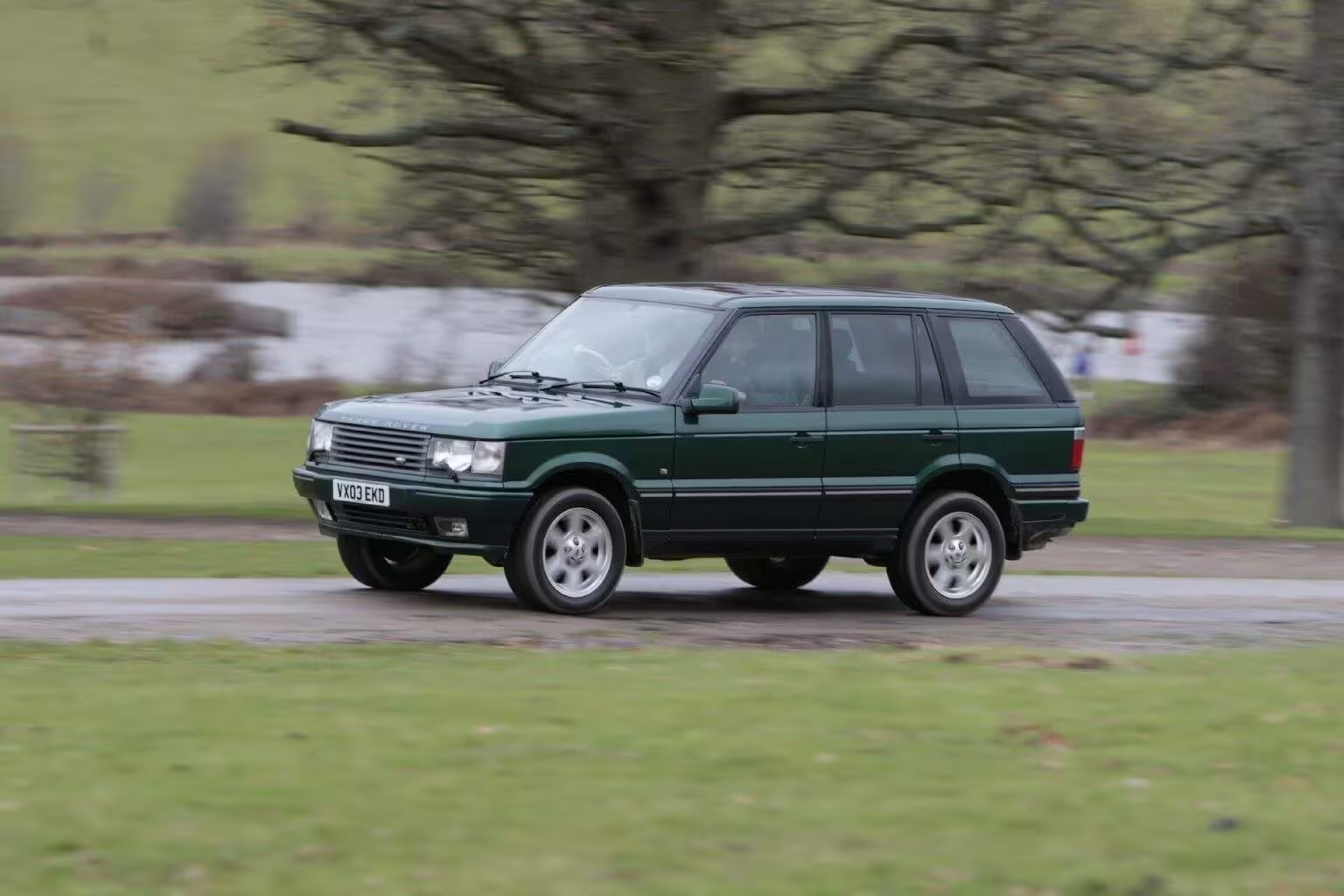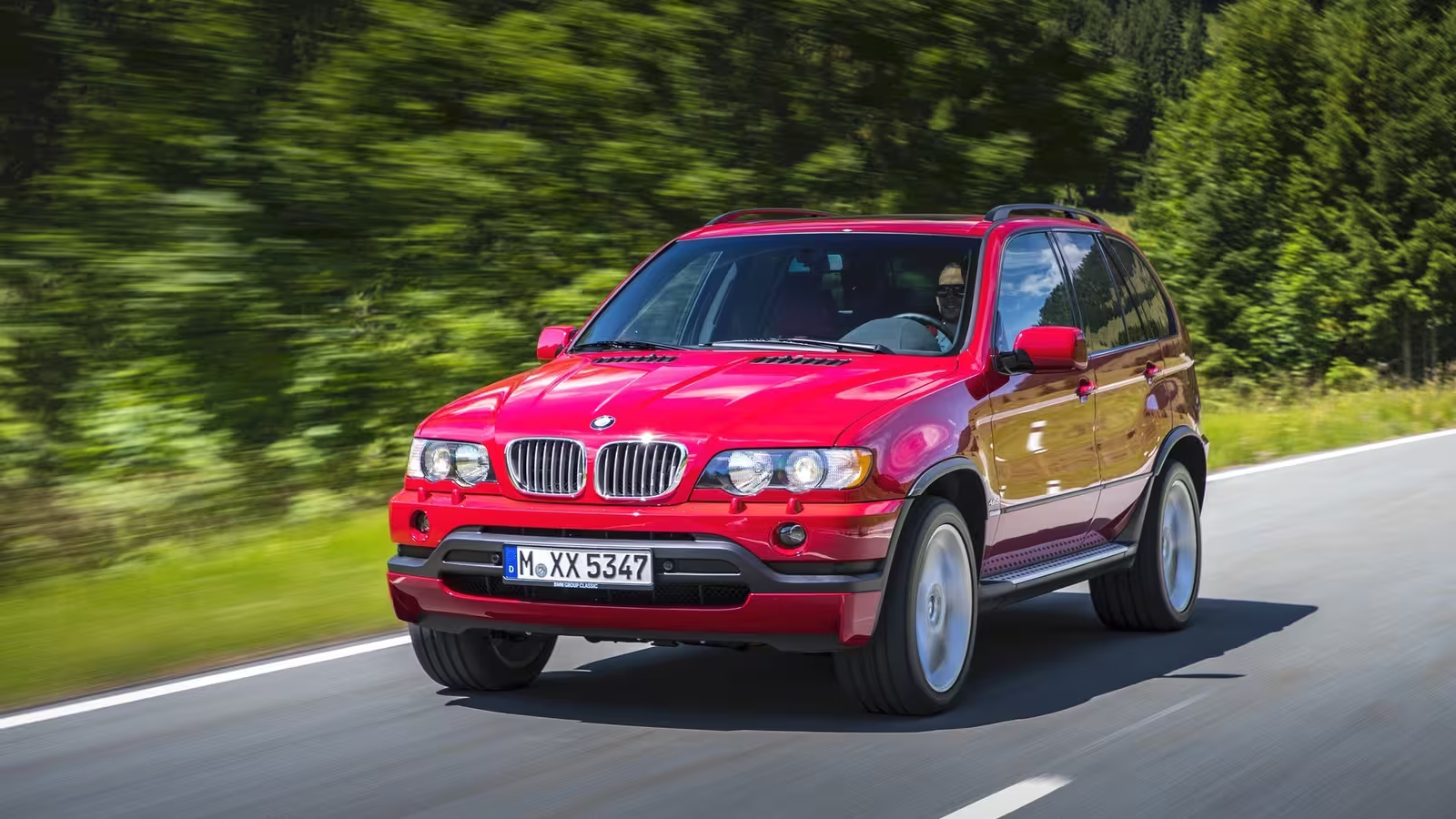10 Minutes
Introduction: The SUV Moment That Almost Changed BMW
Imagine walking into a BMW showroom in the late 1990s and finding a Range Rover with a BMW badge on the grille. It wasn’t a fantasy — it was a genuine scenario debated inside Munich and New Jersey boardrooms. As SUVs surged across North American driveways, BMW faced a strategic crossroads: partner with Land Rover and sell Range Rovers through BMW dealers, or build its own premium utility vehicle that preserved the brand’s driving-focused reputation. The decision that followed led to the X5 and reshaped BMW’s future.
The Rover Group Acquisition: Instant SUV Cred or Strategic Burden?
In January 1994 BMW purchased the Rover Group from British Aerospace for £800 million, acquiring a sprawling portfolio that included Rover, Mini, MG, Triumph — and critically, Land Rover. Overnight BMW had access to a storied off-road brand with an established SUV nameplate. For executives wrestling with the exploding U.S. market — where Ford Explorer and Jeep Grand Cherokee dominated and rivals from Mercedes-Benz and Lexus were about to enter — that looked like a shortcut into the segment.
Why a Range Rover felt tempting
Range Rover carried instant cachet in luxury and off-road capability. Selling Land Rover products through BMW’s dealer network could have been a rapid, low-risk play to 'own the garage' — the U.S. marketing idea that BMW of North America pushed to keep a second vehicle bay from being filled by a competitor. But the flagship available at the time, the P38A Range Rover introduced in 1994, was already showing its age and engineering limits.

BMW’s Influence on the L322 Range Rover
BMW didn’t merely inherit a badge; it actively influenced the next-generation Range Rover. Internally, BMW operated multiple autonomous design and engineering studios: Designworks in California focused on styling updates and BMW Technik in Germany toyed with other body concepts. Designworks produced facelift ideas for the P38A as a quick sales remedy, but those were ultimately shelved because the base vehicle’s engineering was not competitive enough.
What many enthusiasts don’t know is that the L322 Range Rover — the successor program — was engineered under BMW’s technical leadership in Munich. While Land Rover stylists handled the exterior and interior design language, the L322’s chassis engineering, systems integration, and validation work were heavily BMW-led. The result was a model that, despite wearing a Range Rover badge, carried considerable BMW DNA beneath the surface.
The U.S. Imperative: "Own the Garage"
BMW of North America president Vic Doolan pushed a simple but powerful idea: secure the second car in a customer’s garage. He and product planner Rich Brekus argued that without a distinct BMW SUV, customers would park a Mercedes M-Class or Lexus RX next to their BMW sedan. Brekus famously advised against a minivan and for an 'on-road' SUV — a premium vehicle that prioritized car-like handling rather than heavy-duty off-roading.
The debate came to a head in a late-1995 board meeting near LaGuardia Airport. One option presented was co-selling Range Rovers in BMW dealerships; the other was to create a true BMW SUV. The meeting was combustible — Land Rover marketing resisted the idea of merged showrooms — but the momentum for a BMW-built model had been set.
Engineering the BMW Answer: A Sport Activity Vehicle
BMW’s development teams rejected a body-on-frame truck or a low-range gearbox for the new model. Instead, engineers adapted a raised 5 Series Touring (E39) chassis and borrowed suspension architecture and electronics from BMW’s sedan lineup. The philosophy was clear: deliver the utility and presence of an SUV, but retain the ride, handling, and refinement customers expected from BMW.
Key engineering choices included MacPherson strut front geometry and multilink rear suspension tuned for on-road dynamics, the use of steel for structural durability, and the integration of electronic traction and stability systems in place of mechanical locking differentials. Hill Descent Control — a feature familiar from Land Rover — was used as a clever software solution to avoid the weight and complexity of a traditional low-range transfer case.
Design: From California studios to the signature dogleg
Designwork for BMW’s first SUV began at Designworks/USA in California, where teams blended the E39 sedan’s proportions into a taller, more purposeful body. The now-iconic C-pillar 'dogleg' was refined to give the vehicle a distinctive side profile while retaining visual ties to BMW’s family identity. Early prototypes sacrificed cargo space for style, but feedback from U.S. executives led to a longer rear overhang and a genuinely usable cargo area. To position it apart from traditional off-road SUVs, BMW coined the term 'Sport Activity Vehicle' (SAV), emphasizing sportiness and daily driving capability.

Launch and Market Positioning: The E53 X5 Debuts
The outcome of these choices was the E53 BMW X5, revealed at the Detroit Auto Show in January 1999. BMW positioned the X5 as a premium, performance-oriented SAV designed to compete with emerging luxury crossovers while holding onto BMW’s core brand promise of driver engagement. Rather than emphasizing rock-crawling ability, marketing highlighted the X5’s dual-purpose capability — comfortable on the highway, competent on light trails.
Trim, pricing, and launch hardware
The X5 launched with two powertrains that balanced performance and everyday usability: a 3.0-liter inline-six and a 4.4-liter V8 producing 286 horsepower. Initial pricing was set to compete against other premium entrants, with U.S. starting prices around $38,900 for the six-cylinder and $49,400 for the V8 model. BMW showcased the X5’s versatility during the press launch in Spartanburg, driving prototypes through muddy off-road courses and then immediately onto Road Atlanta’s high-speed circuit to demonstrate both composure and athleticism.
Specifications and Performance Highlights
While the X5 prioritized on-road dynamics, it offered a robust set of mechanical specifications that suited premium buyers seeking space and capability:
- Platform: Raised 5 Series (E39) touring-based platform with reinforced steel structure
- Suspension: MacPherson strut front and multilink rear tuned for controlled roll and ride comfort
- Drivetrain: Full-time all-wheel-drive system with electronic traction controls (no heavy low-range gearbox)
- Powertrains at launch: 3.0L inline-six and 4.4L V8 (approximately 286 hp for the V8); automatic transmission
- Capabilities: Confident highway dynamics, competent light off-road and inclement-weather performance, practical cargo volume after design adjustments
These specifications made the X5 competitive against contemporaries such as the Mercedes M-Class and the emerging Lexus RX, while BMW’s ride-and-handling bias gave it a distinct niche among luxury buyers who prioritized driving dynamics.
Production, Impact, and Legacy
BMW’s Spartanburg plant — initially producing the Z3 roadster — gained new purpose as the X5 program expanded. By building the X5 in South Carolina, BMW took advantage of existing capacity and positioned production close to its largest market. Between 1999 and 2006 BMW produced 616,867 first-generation X5s, more than half destined for export. The X5 not only made Spartanburg BMW’s largest global plant, but it also created the foundation for a family of BMW X models that would become core to the company’s profitability.
Vic Doolan and other U.S. executives summed it up bluntly: the X5 'transformed BMW' — it occupied new garage space that might otherwise have gone to competitors, funded corporate restructuring, and helped shift BMW’s portfolio toward SUVs and crossovers without abandoning the brand’s performance DNA.
Comparisons: X5 vs. Range Rover L322
How does the path BMW chose compare to the alternative of selling Range Rovers in BMW showrooms? The contrast is instructive:
- Brand identity: The X5 preserved BMW’s driver-focused image by prioritizing steering, handling, and on-road dynamics. A Range Rover in a BMW showroom risked diluting that perception by associating BMW with a heavy, off-road-oriented product.
- Engineering control: Building the X5 allowed BMW to own the platform, systems, and testing protocols. The L322, while engineered under BMW oversight, remained a Land Rover-styled product with different off-road priorities.
- Market fit: The X5 targeted an emerging luxury buyer who wanted SUV practicality without sacrificing car-like behavior. Range Rover buyers sought different attributes — more emphasis on off-road capability, prestige, and a particular brand narrative.
In short, BMW’s decision to develop its own Sport Activity Vehicle created greater long-term strategic value and allowed the company to enter the SUV market on its terms.
Conclusion: A Strategic Gamble That Paid Off
BMW came close to shortcutting its SUV strategy by leveraging Land Rover’s nameplate, but a complex mix of engineering realities, dealer politics, and brand stewardship pushed Munich to design from first principles. The X5’s success validated that choice: it delivered a new revenue stream, reinforced BMW’s performance credentials in a growing segment, and catalyzed the brand’s global expansion in the SUV era. Had the early plan favored rebadging Range Rovers, BMW’s product lineup and dealer experience might look very different today. Instead, the X5 set the template for modern BMW crossovers and changed the company’s trajectory.
Source: bmwblog


Leave a Comment